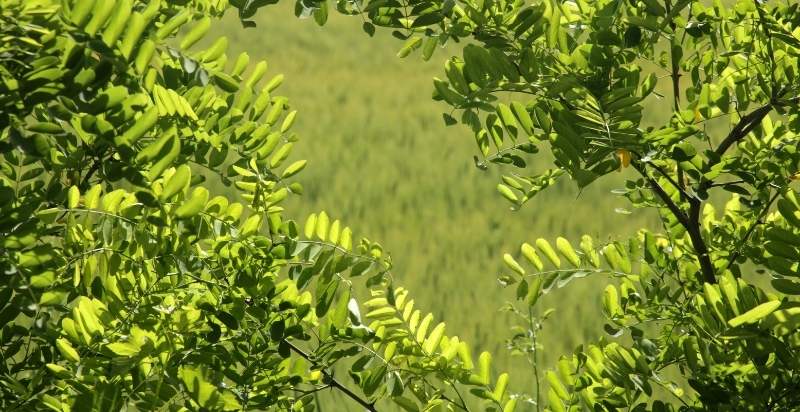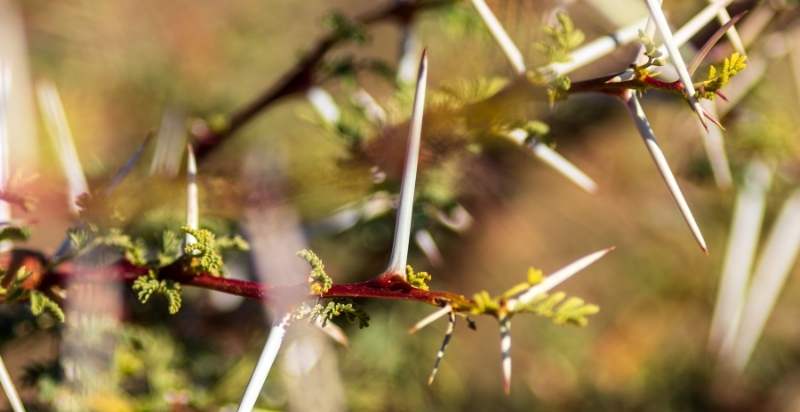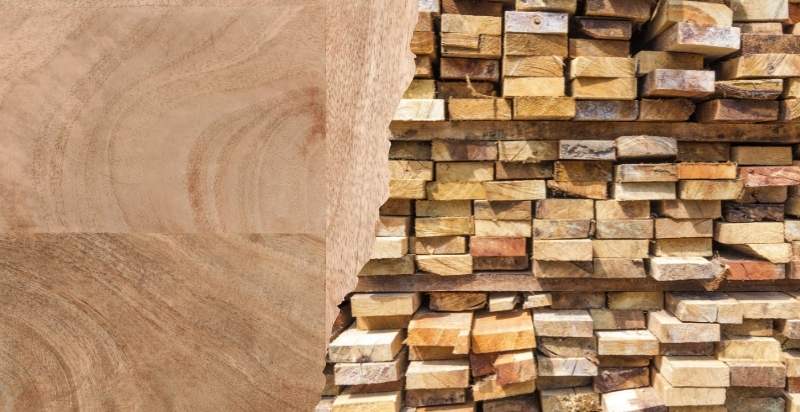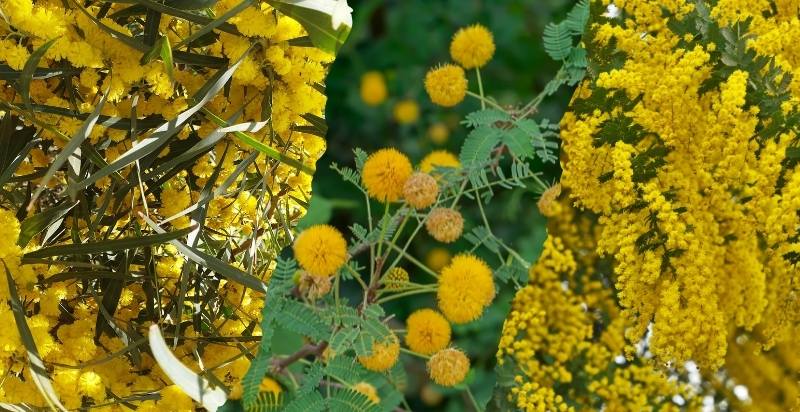Do you know what acacia is? If not, you’re in for a treat! In this blog post, we will discuss everything there is to know about the acacia tree. Acacias have many uses and are a vital part of the ecosystem. Keep reading to learn more!
What is the Acacia tree?
The Acacia tree is a large genus of shrubs and trees belonging to the subfamily Mimosoideae of the family Fabaceae, first described in Africa by the Swedish botanist Carolus Linnaeus in 1773. The genus comprises about 1,300 species found in warm temperate, subtropical, and tropical regions worldwide, with the majority native to Australia and Africa.
Acacia trees have many uses, including ornamentals, shade trees, hedges, windbreaks, and erosion control. They are also an important source of food and fuel for humans and animals, as well as construction timber, pulpwood, and tannin. Some species are invasive weeds outside their natural range.
Types of Acacia Trees
There are two main types of acacia trees: those with compound leaves and those with simple leaves.
Compound-Leaved Acacias include the African acacias (such as A. senegal and A. tortilis), which have phyllodes (leaflike stems) instead of true leaves. These species are often used for browse (animal fodder) and fuelwood. The Australian acacias, such as A. aneura and A. flindersii, have bipinnate leaves (that is, each leaf has numerous small leaflets arranged in pairs along a central axis). These species are important in producing wattle bark (used for tanning and dyeing) and gum acacia (used in adhesives and confectionery).
Simple-Leaved Acacias include the myall tree (A. dealbata), the tallest of all the acacias, growing to 30 metres (100 feet). The myall tree is found in Australia and New Guinea and has been introduced into Africa and South America. Other simple-leaved acacias include the silky oak (A. robusta), native to Australia but planted extensively in India, and the koa tree (A. koa), found on the Hawaiian Islands.
Acacia Tree : Description
Most acacia species are evergreen, although a few (e.g., A. farnesiana) are deciduous. All have compound leaves with small, inconspicuous flowers borne in heads or spikes. The leaves are normally bipinnate, but some species (e.g., A. dealbata) have tripinnate leaves.
The stems of most acacia species are armed with spines or thorns, which protect the plants from grazing animals and deter humans from using them as walking sticks! The thorns can be single (e.g., A. robusta) or grouped in pairs (e.g., A. tortilis). Some species (e.g., A. cyclops) have no visible thorns.
Acacias are mostly small to medium-sized trees or shrubs, although a few (e.g., A. davyi) are lianas (woody vines). They range in height from less than 1 meter to over 30 meters. The tallest recorded tree was an A. nilotica in Sudan that was over 40 meters tall!
Acacia Tree : Leaves
The leaves of acacia trees are usually small and simple, with just one or two veins running through them. Some acacia tree species leaves are covered in hairs, while the leaves of other species are smooth. The leaves of most acacia trees are green, but the leaves of some species can be red, yellow, or purple.

Acacia Trees : Flowers
Acacia trees flowers are often yellow or white and arranged in clusters. The flowers of some species of acacia tree are very small, while the flowers of other species can be quite large. The flowers of most acacia trees have a sweet smell, often used to make perfumes and cosmetics.

Acacia Trees : Thorns
Thorns of acacia trees can be large and sharp or small and barely noticeable. The thorns of some species of acacia tree are covered in hairs, while the thorns of other species are smooth. The thorns of most acacia trees are green, but the thorns of some species can be red, yellow, or purple.

Acacia Trees Distribution And Habitat:
Acacia species are found worldwide in warm, subtropical, and tropical regions. Most are native to Australia and Africa, with fewer species found in North and South America, Asia, and Europe.
In Australia, acacias are found in all states and territories, from humid rainforests to deserts. The highest species diversity is found in Western Australia, where over 800 species occur!
Acacia Tree Uses:
In Africa, acacias are mostly found in the dry regions south of the Sahara Desert. A few species (e.g., A. Senegal) extend north of the desert into the Sahel region.
Acacia trees have many uses, including ornamentals, shade trees, hedges, windbreaks, and erosion control. They are also an important source of food and fuel for humans and animals, as well as construction timber, pulpwood, and tannin. Some species are invasive weeds outside their natural range.
Ornamental Use
Many acacia species are grown as ornamental plants in parks and gardens. Species such as A. dealbata (silver wattle), A. farnesiana (huisache), and A. nilotica (gum Arabic tree) are commonly used as street trees or in public parks.
Food And Fuel
The seeds of many acacia species are edible and have been used as a food source by humans for thousands of years. The pods of some species (e.g., A. Senegal) are also eaten, while the leaves of others (e.g., A. tortilis) are used as fodder for livestock.
The wood of acacia trees is widely used as fuelwood, especially in Africa, where it is often the only type of wood available. High heat and low smoke production make it ideal for cooking and heating.
Construction Timber
The hard, durable wood of acacia trees is used for various construction purposes, including making furniture, flooring, paneling, and veneer. It is also used for railway sleepers, fence posts, and poles.
Pulpwood
The soft wood of some acacia species (e.g., A. farnesiana) is used to make paper pulp. The high tannin content makes it ideal for producing paper with a high degree of whiteness.
Tannin
The bark and leaves of many acacia species contain high levels of tannins, which are compounds that have astringent and antimicrobial properties. Tannins are used in the leather industry for tanning hides and producing dyes and inks.
Invasive Species
Several acacia species are considered to be invasive weeds outside their natural range. These include A. longifolia (coastal wattle), A. mearnsii (black wattle), and A. saligna (laburnum). They often invade native habitats, where they can displace native plants and animals.
Acacia species are also known to harbor the soil-borne fungus Phytophthora cinnamomi, which causes dieback disease in a wide range of plant species. This makes them a serious threat to native ecosystems, especially in wetter areas where the fungus can spread rapidly.

Acacia Trees Other Varieties:
There are over 1,000 species of acacia tree, so it is impossible to list them all here. However, some of the most common types of acacia trees include the following:
Acacia Senegal:
The Acacia Senegal, also called the Gum Arabic Tree, is a small to medium-sized tree growing to about 20 meters tall. The bark of this tree is used to produce gum arabic, a sticky substance used in various products like incense, cosmetics, and medicines. The tree is native to Africa and can be found in countries like Sudan, Ethiopia, and Somalia.
Acacia Seyal:
The Acacia seyal, also known as the Red Sea Acacia or Shittah Tree, is a small to medium-sized tree growing to about 15 meters tall. Like the Acacia Senegal, the bark of this tree is used to produce gum arabic. The tree is native to Africa and can be found in countries like Sudan, Ethiopia, and Somalia.
Acacia Melanoxylon:
The Acacia melanoxylon, also called the Blackwood Tree, is a medium to large-sized tree that can grow to about 30 meters tall. This tree is native to Australia and is commonly used in the construction of furniture and musical instruments due to the strength and durability of its wood.
Acacia Farnesiana:
The Acacia farnesiana, also known as the Cassie Flower or Winter Cassia, is a small tree or shrub growing about 3 meters tall. This tree is native to the Americas and produces flowers that are used in producing perfumes, lotions, and shampoos. The tree can be found in countries like the United States, Mexico, and Brazil.
Acacia Baileyana:
The Acacia baileyana, also called the Cootamundra Wattle or Silver Wattle, is a small to medium-sized tree that grows about 10 meters tall. This tree is native to Australia and is often used as an ornamental plant due to its attractive flowers and leaves. The tree can be found in Australia, New Zealand, and Tasmania.
Acacia Pycnantha:
The Acacia pycnantha, also called the Golden Wattle or Australian Wattle, is a small to medium-sized tree that grows about 8 meters tall. This tree is native to Australia and is the country’s national flower. The tree can be found in Australia, New Zealand, and Tasmania.
As you can see, there are many different types of acacia trees, and these are just a few of the more common ones you may come across.

Acacia Trees Identification:
The easiest way to identify an acacia tree is by its leaves. The leaves of acacia trees are usually small and simple, with just one or two veins running through them. The flowers of acacia trees are often yellow or white and arranged in clusters. The thorns of acacia trees can be large and sharp or small and barely noticeable.
If you are still unsure whether or not a tree is an acacia tree, you can consult with a local expert or take a sample of the leaves or flowers to a local nursery or garden center, and they will be able to help you identify the tree.
Conclusion
Acacia trees are a common type of tree found in many parts of the world. These trees are often used for their wood, which is strong and durable, or for their gum arabic, which is used in various products. Acacia trees can be identified by their small, simple leaves and clusters of yellow or white flowers. If you are unsure whether or not a tree is an acacia tree, you can consult with a local expert or take a sample of the leaves or flowers to a local nursery or garden center.
- Water Berries: Description, Flavor, Benefits, And Uses - June 18, 2024
- Everything You Wanted To Know About Sweetheart Cherries - June 17, 2024
- Indian Jujube: Description, Flavor, Benefits, And Uses - April 30, 2024
